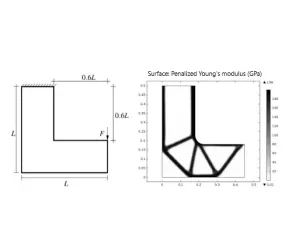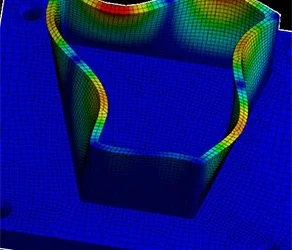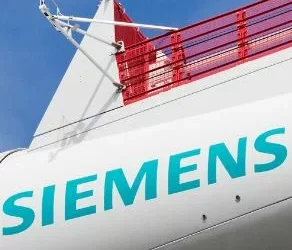Intelligent distribution of materials is utilized in many industries in order to maximize product performance and minimize product prices.
Constructions are often based on intuition, mechanical knowledge, experience or ”trial and error”. Another approach is the utilization of computer programs to conduct design studies and size/shape optimization. However, the results of such methods are much dependent on the user’s ability to define an ideal starting point and to identify which parameters that are relevant to achieve an optimized design for the specific load scenario.
In a situation where the load scenario is not simple, and no previous version of the optimizing item is available, it may be difficult to define an ideal starting point and identify which parameters that are relevant to achieve an optimal design. In such case, topology optimization can be very valuable as it offers unlimited design freedom without requirements to starting points or predefined design parameters. This is often followed by a design study, but now with an ideal starting point and relevant design parameters. In addition, it may often be useful to base topology optimization on a design which has already been optimized.
Today topology optimization is utilized in many industries: From small-scale industries such as solar cells and hearing aids to large-scale industries such as cars and airplanes. The use of topology optimization in the car industry often results in a weight reduction of 20%-40% on structural parts, compared to parts designed on the basis of ”trial and error” or intuition [1]. Moreover, topology optimization often results in reduced development time and may reduce the need of prototypes as well.
An example from the airplane industry is ”GE Jet Engine Bracket Challenge”, a contest to minimize the weight on an existing titanium lifting bracket. The requirement for the lifting bracket was defined by a set of interfaces and some load scenarios which the bracket must be able to hold. Here, the solutions which were found via topology optimization led to weight reductions of up to 87% [2].
[1] N. Aage, E. Andreassen, B. S. Lazarov and O. Sigmund. Giga-voxel computational morphogenesis for structural design, 2017.
[2] H. D. Morgan, H. U. Levatti, J. Sienz, A. J. Gil and D. C. Bould. GE Jet Engine Bracket Challenge: A Case Study in Sustainable Design, 2014.




